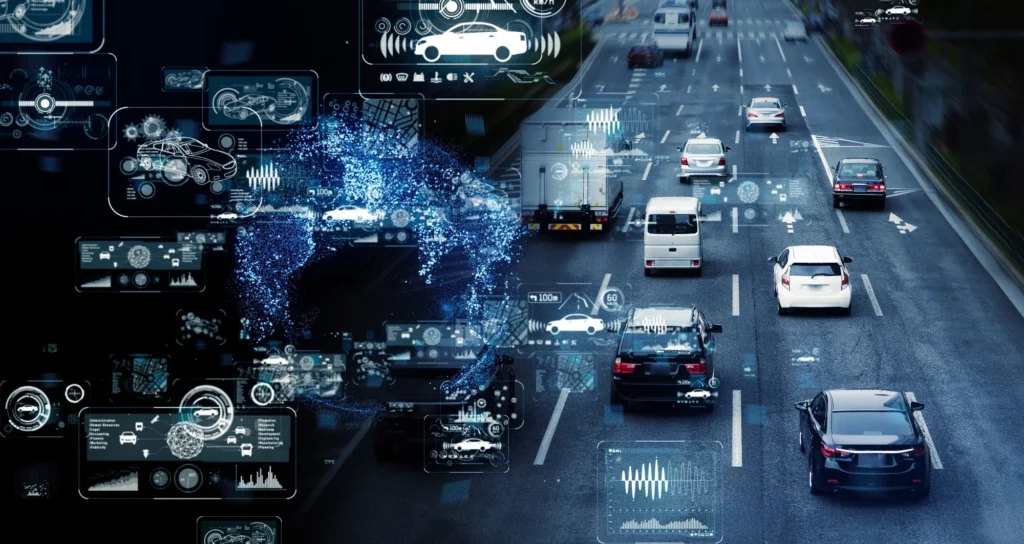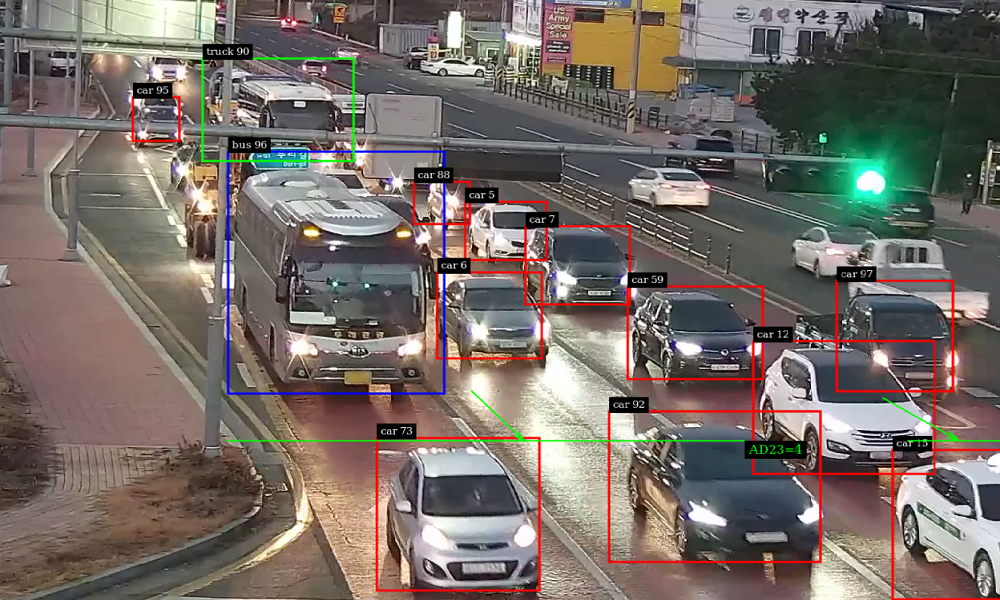Introduction
Oman has long been admired for its scenic beauty, cultural richness, and progressive outlook. In recent years, the Sultanate has also been making notable advancements in the field of technology, particularly artificial intelligence. One of the most pressing urban challenges Oman faces is traffic congestion, which directly affects road safety, fuel consumption, and the overall quality of life of citizens. To address these challenges, Oman has been turning towards AI-driven solutions that promise smarter, safer, and more efficient traffic management. The shift is not only about using technology but about reimagining how modern infrastructure should function to serve people better.
AI-driven traffic management in Oman represents more than just a technological experiment. It is part of a national vision that places innovation at the heart of sustainable development. By incorporating AI into traffic systems, Oman aims to reduce road accidents, enhance mobility, and ensure smoother connectivity across its growing cities. The initiative also reflects Oman’s dedication to aligning with global smart city practices while tailoring them to the country’s unique urban and geographic landscape.
The Urgency of Smarter Traffic Management
Traffic congestion is not merely an inconvenience it has far-reaching impacts on productivity, safety, and even the environment. In Oman’s urban centers such as Muscat, rapid urbanization and an increase in vehicle ownership have placed immense pressure on the existing road infrastructure. Long traffic jams, delays during peak hours, and road accidents are common issues that demand immediate and innovative solutions. Traditional traffic systems, based on static signals and manual monitoring, no longer suffice in handling today’s dynamic traffic conditions.
The urgency is also reinforced by the government’s ambition to provide world-class infrastructure as part of Oman Vision 2040. A future-oriented nation needs mobility systems that are reliable, sustainable, and capable of supporting economic activity. AI is increasingly becoming the answer to this challenge. By learning from real-time data and adapting quickly to changing situations, AI-powered traffic systems can achieve results that traditional systems cannot match.
AI in Action: Intelligent Traffic Lights
One of the most impactful applications of AI in Oman’s traffic management system has been the introduction of intelligent traffic lights. Unlike traditional traffic signals that follow fixed timers, AI-driven traffic lights adapt in real time based on vehicle flow, pedestrian movement, and congestion levels. This dynamic adjustment reduces waiting times, eases congestion at intersections, and ensures a smoother flow of vehicles.
For example, during peak office hours in Muscat, AI systems can detect the surge of vehicles and adjust the green light duration accordingly. At night, when traffic is minimal, the same system ensures that drivers do not waste unnecessary time at empty intersections. This balance not only saves time but also reduces fuel consumption and lowers carbon emissions, contributing to environmental sustainability.

Road Safety Powered by AI
Oman places high importance on road safety, and AI is proving to be a vital tool in reducing accidents. AI-powered surveillance cameras and sensors are now being deployed across key highways and city roads. These systems can detect speeding, reckless driving, and sudden lane changes. Once identified, alerts can be sent to authorities in real time, ensuring swift action.
Moreover, AI technology can predict accident-prone zones by analyzing patterns of past incidents. By identifying high-risk areas, authorities can install warning systems, improve road design, or increase patrol presence. This predictive approach shifts the focus from reacting to accidents to preventing them altogether. It highlights how AI is not only about convenience but also about saving lives and protecting communities.
Predictive Traffic Analytics
Beyond real-time management, AI also brings the power of prediction. Predictive analytics allows Oman’s traffic authorities to forecast congestion patterns based on historical and current data. For instance, AI models can predict which areas will face congestion during holidays, public events, or sudden weather changes.
This predictive capability allows authorities to make informed decisions in advance. They can reroute traffic, increase public transport options, or issue alerts to drivers through navigation apps. By addressing congestion before it escalates, AI ensures that the roads remain efficient and reliable for everyone.
Integration with Smart Mobility
AI-powered traffic management does not work in isolation. Oman is gradually integrating these solutions with its broader smart mobility initiatives. This includes coordination with public transport systems, ride-sharing platforms, and navigation apps. For instance, buses and taxis equipped with AI navigation tools can receive real-time updates about congestion, enabling drivers to choose the fastest routes.
Additionally, ride-sharing platforms benefit from AI traffic systems by offering passengers more accurate arrival times. This not only improves convenience but also encourages more people to rely on shared mobility instead of private vehicles, indirectly reducing congestion.
Environmental Benefits of AI Traffic Systems
Traffic management is often discussed in terms of safety and efficiency, but the environmental angle is equally important. Congestion leads to higher fuel consumption and increased emissions, which contribute to air pollution and climate change. By reducing idling times, optimizing traffic flow, and encouraging smarter driving habits, AI systems play a direct role in lowering Oman’s carbon footprint.
For a nation like Oman, which values its natural landscapes and aims to promote sustainable living, AI-driven traffic systems align perfectly with environmental goals. Cleaner air, reduced noise pollution, and less fuel wastage benefit not just the present population but also future generations.
Enhancing Commuter Experience
At the heart of these AI initiatives is the commuter. Every individual who drives to work, drops children at school, or uses public transport experiences the difference when traffic systems function better. Shorter travel times, safer roads, and less stress during commutes translate into an improved quality of life.
Moreover, AI systems can integrate with mobile applications, offering commuters real-time updates on traffic conditions. Drivers can receive alternative route suggestions, warnings about roadblocks, or information about parking availability. These small improvements collectively transform the daily experience of mobility across the country.

AI and Emergency Response
Another powerful benefit of AI in traffic management is its role in emergency response. AI systems can detect accidents or breakdowns instantly and alert emergency services. In addition, by controlling traffic lights and rerouting vehicles, the system can create a clear path for ambulances, fire trucks, or police vehicles.
This capability is life-saving, especially in critical medical emergencies where every minute counts. By prioritizing emergency vehicles, AI traffic systems ensure that help reaches those in need quickly and efficiently.
Training and Local Expertise
Implementing advanced AI systems requires not just technology but also expertise. Oman has been investing in training local talent to manage and expand these systems. Universities and technical institutions are collaborating with the government to develop programs in AI, data science, and smart city technologies.
This focus on local capacity-building ensures that Oman does not remain dependent on external expertise. Instead, it cultivates a new generation of innovators and engineers who can take the country’s smart infrastructure to the next level. It also creates new job opportunities, empowering the youth and aligning with national employment goals.
Challenges and the Path Forward
While the progress is promising, the journey is not without challenges. Implementing AI traffic systems requires significant investment in infrastructure, technology, and training. Integrating new systems with older, existing frameworks can also pose technical difficulties. Additionally, ensuring data security and privacy remains a critical concern.
Despite these challenges, Oman’s leadership has shown a clear commitment to overcoming obstacles. By adopting a phased approach, beginning with pilot projects and gradually expanding them, the country ensures that solutions are tested and refined before scaling up. Continuous collaboration with global technology providers, along with nurturing local expertise, further strengthens Oman’s ability to navigate these challenges.
The Bigger Picture: Smart Cities and National Vision
AI-powered traffic management is only one part of Oman’s broader journey toward becoming a smart nation. These efforts align with the Sultanate’s Vision 2040, which emphasizes innovation, sustainability, and economic diversification. By addressing traffic challenges through AI, Oman demonstrates how technology can be leveraged to improve urban living while supporting national development goals.
Smart traffic systems also serve as a model for other domains. Lessons learned from managing traffic with AI can be applied to healthcare, energy, logistics, and tourism. This interconnected approach positions Oman as a forward-thinking nation that sees technology not as an accessory but as a foundation for progress.
Conclusion
Oman’s adoption of AI in traffic management is a testament to its forward-looking spirit and commitment to its people. By embracing intelligent systems, the country is reducing congestion, enhancing safety, protecting the environment, and improving daily life for commuters. More than that, it is cultivating local expertise, creating job opportunities, and preparing for a future where technology and humanity go hand in hand.
As Oman continues this journey, it sets an inspiring example for other nations in the region and beyond. AI is not just a tool to manage traffic it is a symbol of how technology can be harnessed to build safer, smarter, and more sustainable communities. The road ahead is promising, and with each step, Oman moves closer to its vision of a truly intelligent and people-centered nation.
Also Read – Big Data Driving Oman’s Path to Strong Economic Growth



